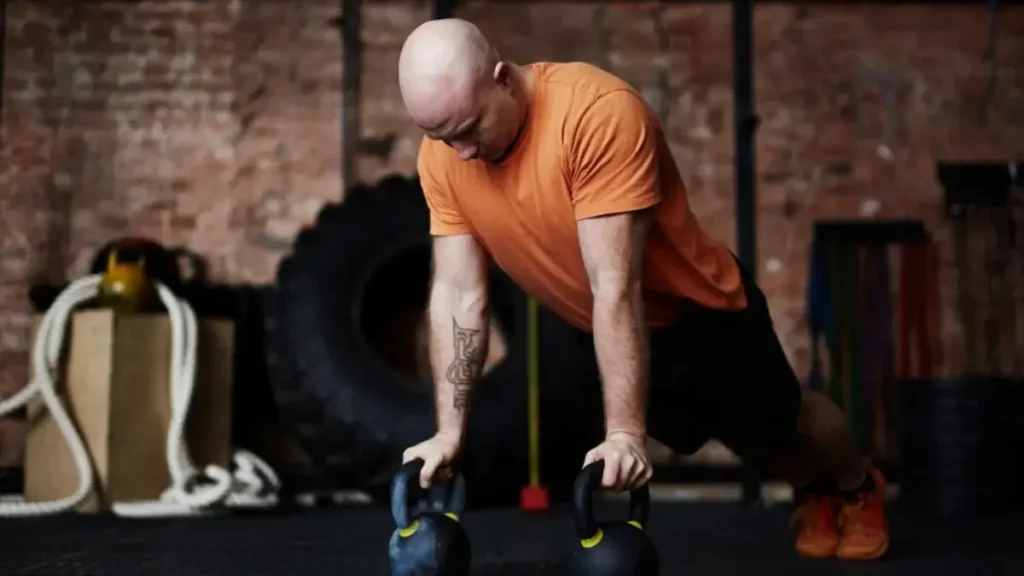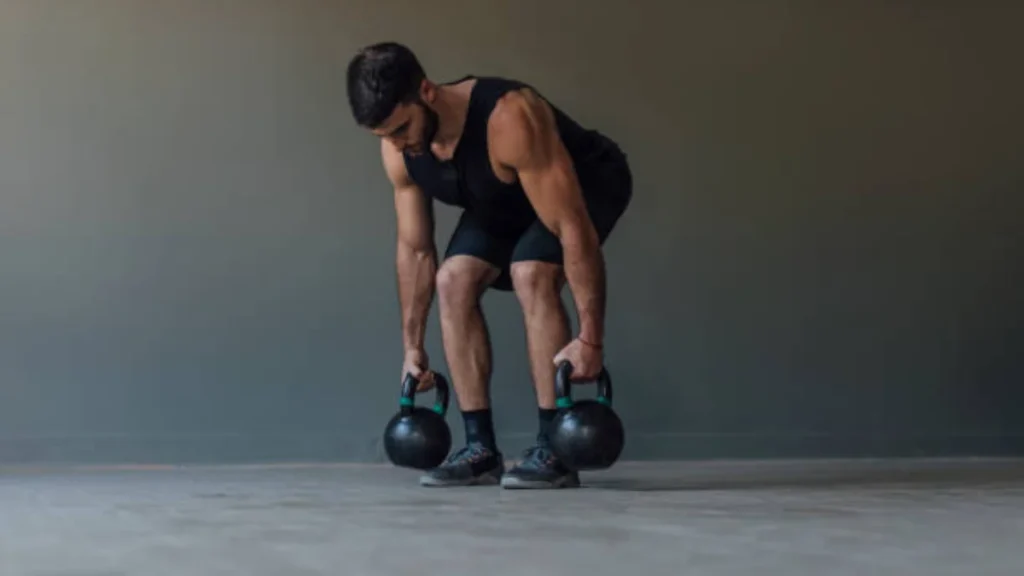EXERCISE
The Ultimate Beginner Kettlebell Program for Strength and Conditioning

Are you ready to take your fitness routine to the next level? Look no further than kettlebells! This tool is versatile enough for use in gaining strength and conditioning not only for the regular exercisers but also for their beginners in the fitness routines. In this blog post, we outline the ultimate program for beginners. Follow through with this, and in no time, there will be results—so grab that kettlebell, and let’s get to work.
Table of Contents
What is the Kettlebell program?
The kettlebell program is an intense, fast, and solid training plan worked through kettlebells simply because of their cast-iron weight attached to their handles. Compared with the other traditional exercises using a dumbbell or barbell which comes in one size, the kettlebell comes in different sizes and shapes that make a limitless base for the movement and exercising. The program, in most cases, is an approach with exercise to include muscular strength, endurance flexibility, and general athletic activities.
Benefits of the Beginner Kettlebell Program
- Engages multiple muscle groups simultaneously, making it a time-efficient workout.
- Incorporates dynamic movements like swings and snatches, enhancing cardiovascular fitness and strength.
- Promotes functional strength by mimicking real-life movements, improving performance, and preventing injuries.
- Requires increased core activation due to offset weight distribution, improving core strength and stability.
- Versatility allows for workout variations suitable for all fitness levels, offering a challenging yet rewarding experience.
Understanding the Basics: Proper Form and Technique
Beginner kettlebell training requires proper form and technique, with a neutral spine, core engagement, and controlled movements. Start with lighter weights and gradually increase intensity. Quality over quantity is key, and study tutorials or work with a certified trainer for fine-tuning. Consistent practice and attention to detail will set a solid foundation for your kettlebell journey.
Essential Equipment for a Kettlebell Program
First, you must possess a good-quality kettlebell that can give you ample challenge without sacrificing form. When it comes to the weight you should settle on, anywhere between 8 to 12 kg will be perfect for women, while the ones at 16 kg will be good for men. Have some good comfortable workout shoes, that protect one from instability, and keep off injuries. Create a safe area in your home or gym for easy movement and perfecting kettlebell techniques.
Why a Beginner Kettlebell Program is Important
Starting a beginner kettlebell program is essential for setting a strong foundation for strength and conditioning goals. It helps learn proper techniques, prevents injuries, and gradually builds strength, stability, and coordination. It can be the weight and intensity that minimizes burnout and overtraining.

The Ultimate Beginner Kettlebell Program: A Step-by-Step Guide
Warm-Up Exercises
- Dynamic movements like arm circles, leg swings, and hip rotations to increase blood flow and loosen muscles.
- Bodyweight exercises like squats, lunges, and push-ups activate major muscle groups and improve mobility.
- Proper breathing techniques to oxygenate muscles and enhance performance.
- Light cardio activities like jogging or jumping jacks to gradually elevate heart rate.
Beginner Kettlebell Program Workout Routine
- Focus on a full-body workout combining upper body, lower body, and core exercises.
- Incorporate movements like squats, presses, rows, swings, and planks to target multiple muscle groups.
- Maintain proper form throughout each exercise to prevent injury and maximize results.
- Start with lighter weights until comfortable, then progress to heavier kettlebells.
- Stay focused and push yourself within your limits.
- Listen to your body if something doesn’t feel right.
- Complete each set with determination and dedication.
Upper Body Exercises
- Kettlebell press targets shoulders, triceps, and chest for improved upper body strength.
- Renegade row engages the core for stability and balance, developing a strong back and arms.
- Kettlebell push-ups intensify arm and chest engagement.
- Upright rows target shoulders and traps for better posture and shoulder stability.
Lower Body Exercises
- Kettlebell goblet squat: Targets quads, hamstrings, glutes, and core for stability.
- Kettlebell deadlift: Strengthens posterior chain, hamstrings, and lower back.
- Kettlebell swing: Unmatched for explosive power and conditioning.
- Kettlebell deadlift: Hip-dominant movement improves cardiovascular fitness.

Core Exercises in the Beginner Kettlebell Program
- Core exercises target abdominal, lower back, and pelvis muscles for stability and strength.
- Russian twist: Sit with knees bent and lean back slightly, holding the kettlebell. Twist the torso to one side, engaging obliques.
- Plank: Hold the body in a straight line from head to heels, and engage core muscles.
Incorporating core exercises in a beginner kettlebell program helps develop a solid midsection.
Cool Down and Stretching
- Cool-down exercises help return the heart rate to normal and improve flexibility.
- Gentle movements like walking or slow jogging can reduce muscle soreness and stiffness.
- Stretching after a kettlebell session targets specific muscle groups, focusing on hamstrings, quadriceps, shoulders, and back.
- Hold each stretch for 15-30 seconds without bouncing, allowing muscles to relax and lengthen gradually.
- Breathing deeply throughout each stretch is crucial for maximum effectiveness.
- Proper cool-down and stretching routine promotes recovery, mobility, and future workout success.
Recovery and Injury Prevention with Kettlebells
The training with kettlebells encompasses proper lifting form and technique, meanwhile dealing with rest, mobility exercises, foam rolling, and stretching to recover. Without inactivity and proper techniques, injury may be caused. The risk of injury lowers when flexibility is improved with mobility exercises. Muscle adaptation requires the right amount of resting period between the workouts. Always consult a professional trainer or medical practitioner in case of any discomfort. The special concern with every applied recovery intervention and injury preventive protocol is to minimize the risks associated with physical activity.
Conclusion
Adding kettlebells to your routine can add a tremendous amount of strength and conditioning. Using some of these beginner tips and exercises, anyone can safely and effectively build muscle, increase cardiovascular endurance, and boost overall functional strength. Remember to start with lighter weights and focus on proper form before progressing to heavier loads.
-

 GENERAL2 months ago
GENERAL2 months agoUncovering the World of кинокрадко: The Dark Side of Film Piracy
-

 GENERAL1 month ago
GENERAL1 month agoUnveiling the Art of преводсч: How Translators Bridge Language Barriers
-

 YOGA1 year ago
YOGA1 year ago4 Person Yoga Poses for Beginners
-

 GENERAL2 months ago
GENERAL2 months agoThe Journey of iamnobody89757: From Anonymous User to Internet Sensation





























